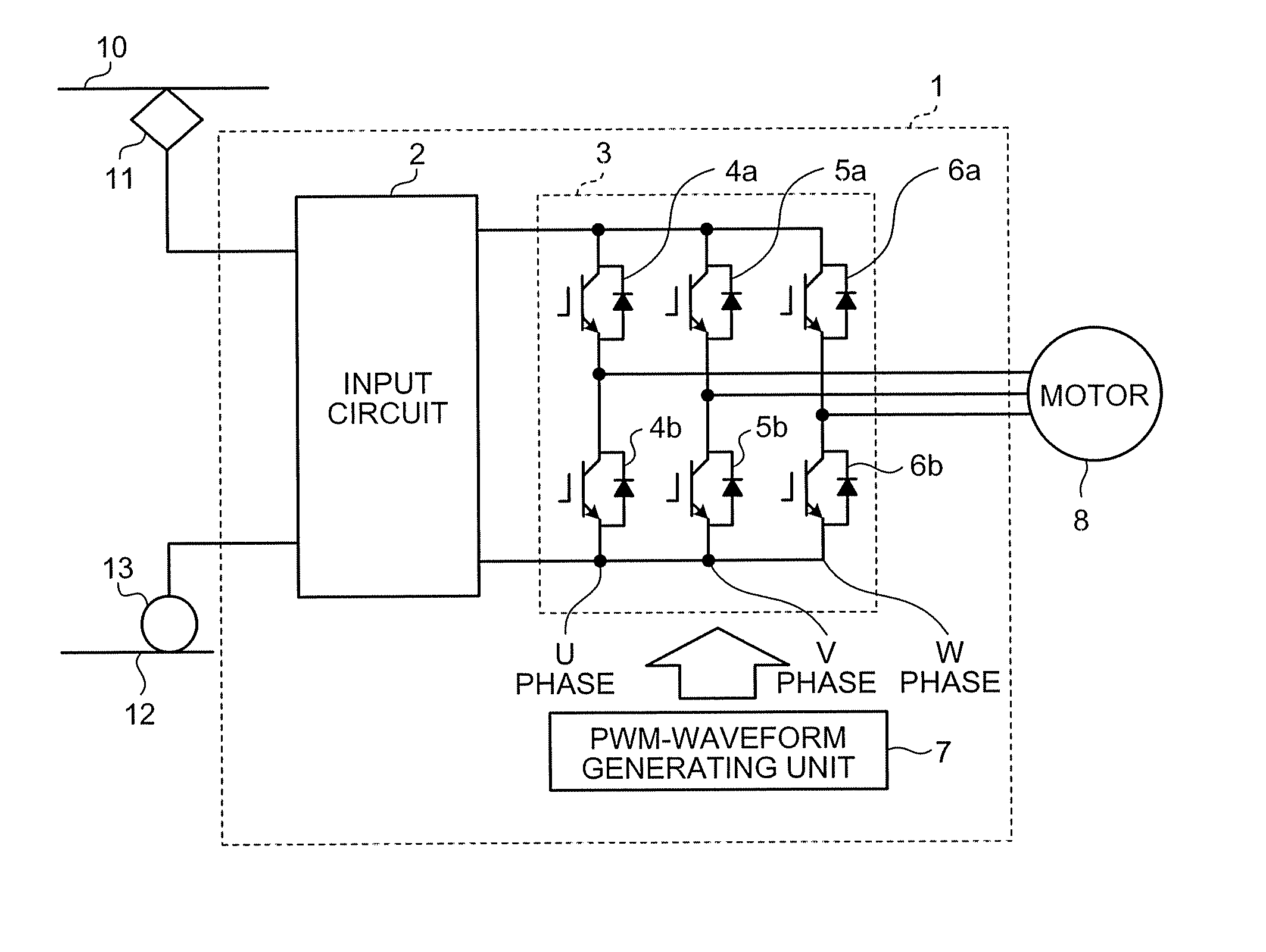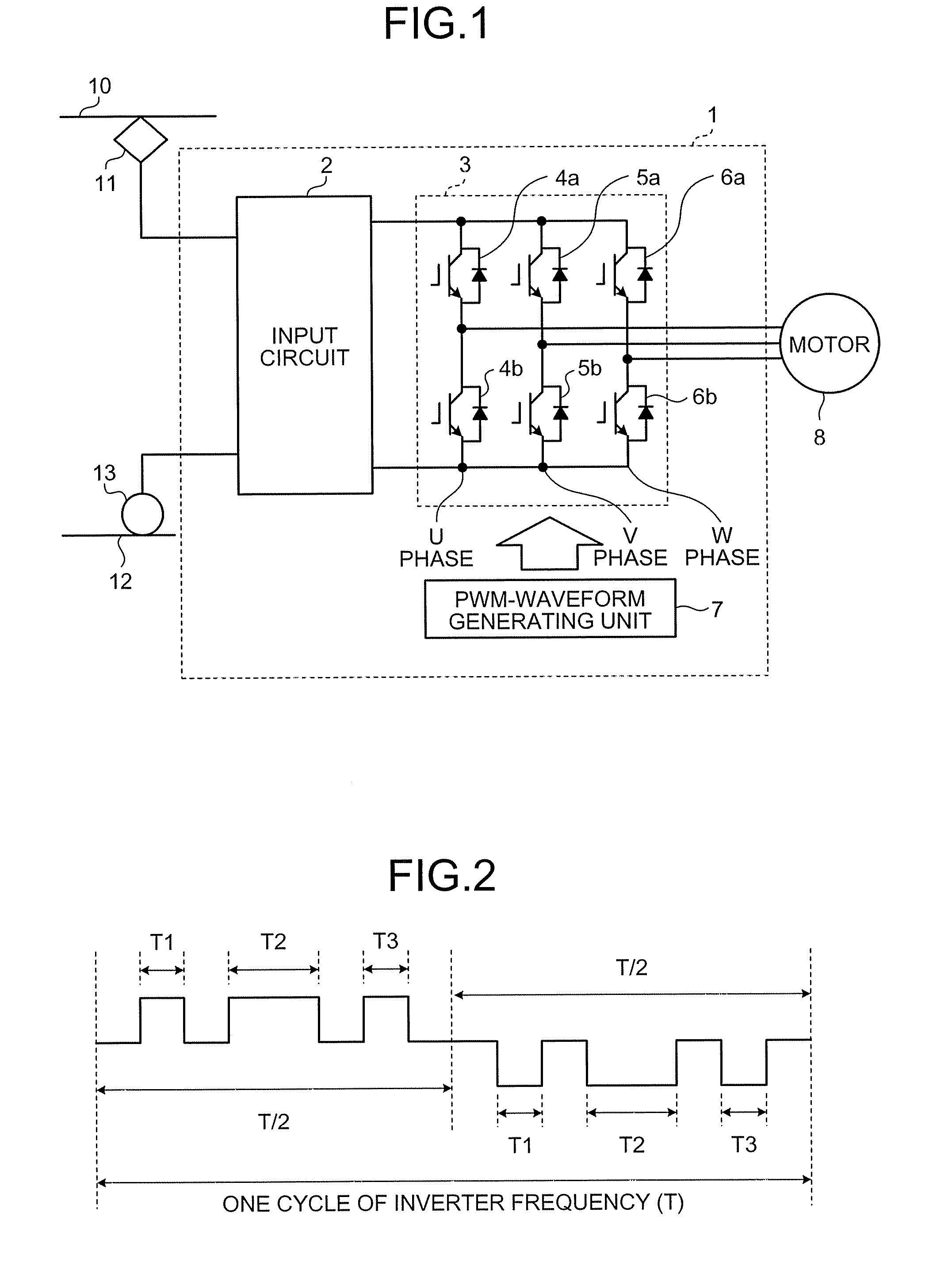Power Converting Apparatus
a power conversion and power technology, applied in the direction of dynamo-electric converter control, motor/generator/converter stopper, dynamo-electric gear control, etc., can solve the problem of generating a big nois
- Summary
- Abstract
- Description
- Claims
- Application Information
AI Technical Summary
Benefits of technology
Problems solved by technology
Method used
Image
Examples
Embodiment Construction
[0025]Exemplary embodiments of a power converting apparatus according to the present invention are described in detail below with reference to the accompanying drawings. The present invention is not limited to these exemplary embodiments.
[0026](Structure of Power Converting Apparatus)
[0027]FIG. 1 is a diagram for explaining a structural example of a power converting apparatus according to an embodiment of the present invention. As shown in the figure, a power converting apparatus 1 of the present embodiment includes an input circuit 2 that at least includes a switch, a filter condenser, and a filter reactor; an inverter unit 3 that includes switching elements 4a, 5a, 6a, 4b, 5b, and 6b, and that is connected to at least one motor 8 for driving an electric locomotive; and a PWM-waveform generating unit 7 that generates and outputs a PWM waveform for controlling switching of the inverter unit 3. An induction motor or a synchronous motor is suitable as the motor 8 connected to the inve...
PUM
 Login to View More
Login to View More Abstract
Description
Claims
Application Information
 Login to View More
Login to View More - R&D
- Intellectual Property
- Life Sciences
- Materials
- Tech Scout
- Unparalleled Data Quality
- Higher Quality Content
- 60% Fewer Hallucinations
Browse by: Latest US Patents, China's latest patents, Technical Efficacy Thesaurus, Application Domain, Technology Topic, Popular Technical Reports.
© 2025 PatSnap. All rights reserved.Legal|Privacy policy|Modern Slavery Act Transparency Statement|Sitemap|About US| Contact US: help@patsnap.com



